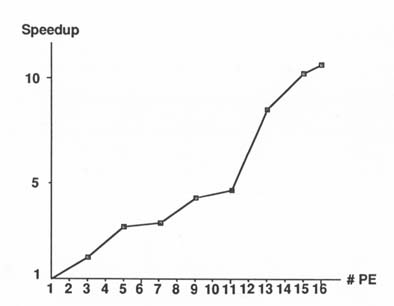
Speedup by Parallel Implementation of Learning Algorithm
Then the system calculates the suspect list for given symptom and observa- tion data. This task is performed by utilizing a model-base knowledge which models behavior and interconnection of the target device components. This model knowledge is represented in first-order predicate scheme and written in the logic programming language KL1. The system computes the suspect list by a hypothetical reasoning which calculates a set of explanations of giving the faulty output for the given input data on the device. The system repeats selecting a test and executing the test, until it reaches a termination condition. In order to select the most effective test, it computes information gain for each candidate tests by calculating entropy, based on fault probability distribution. This function is also complex and implemented in parallel. EXPERIMENTAL RESULTS Several experimental executions have been performed to show the effec- tiveness of the parallel implementation. The computational time with 16 processors is four to five times faster for the diagnosis function and eight to eleven times faster for the learning function than with one processor. The following figure shows the speedup by increasing number of processors.
 Speedup by Parallel Implementation of Learning Algorithm |